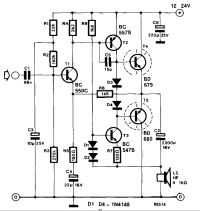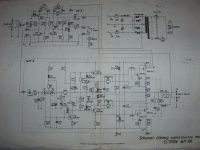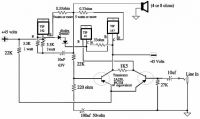Hello
I will propose such a solution:

1.It works for sure, and it's pretty good. Anyway, for some year it has been using a 4? loudspeaker
2. I can describe the diagram. It comes from the "Elektor" magazine so there are no problems with the quality of the solution. Very stable. In total, the commissioning consists in checking the voltage on the emitters of the BD679 / 680 transistors
3. Not many components, not bad parameters, for 80% I have a PCB design for it.
4. I have made a simulation of the system, if it was needed or for reference.
5. I recommend a solution
6. If this arrangement will not fit, I suggest also one
Link I also put it together and it sounded pretty good, I only changed the diodes from stabilization to transistor ;)
Ps. I will not show a better diagram of the studio audio amplifier that we "tested" as a group in the studio because it is going to break down ...
greetings
EDIT:
In the circuit from "Elektor" emitter resistors should be added (I added 1?





